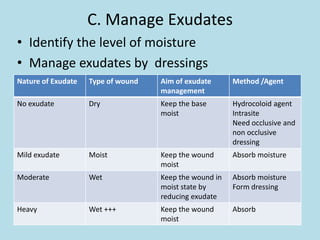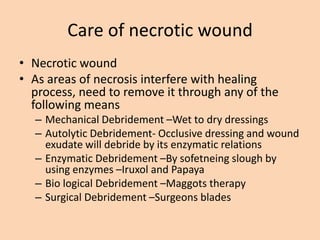wet to dry dressing indications
Substandard of Care Numerous studies and health care guidelines have repeatedly deemed wet to dry gauze dressings as a substandard practice painful labor intensive and not. The wet to dry dressing change is an effective way to help wounds heal.

Prepared By Miss Aisha Al Hofaian Supervised By Dr Gehan Ppt Download
If you have well water use bottled water or sterile saline instead of the.

. The wounds dressing allows the dead skin cells to collect in the dressing so that the wound can heal effectively. The type of wound dressing used. Wash and rinse your hands Picture 2.
Currently there are a variety of wound dressings available ranging from passive adherentnonadherent to interactive and. In some cases you can even rinse the wound while showering. Indications and best use.
The dressing is allowed to dry and adhere to the tissue in the wound bed. To clean a dirty or infected wound. Update on wound dressings.
Put on a pair of non-sterile gloves. An increase of exudate can be a sign of infection. Wet to Dry Page 2 of 2 HOW TO CHANGE THE DRESSING 1.
Every four to six hours the clinician firmly pulls the dry gauze not re-moistened from wound bed at a 90-degree angle. A wet gauze dressing is put in the wound and allowed to dry. Check the wound for increased redness.
Enzymatic 743 and dry gauze 693. Do not rub it dry. A moist to dry dressing is a primary dressing that directly touches the wound bed with a secondary dressing that covers the primary dressing.
Although wet-to-dry dressings using gauze have been the standard treatment for many wounds for decades this treatment method is outdated. Wound drainage and dead tissue can be removed when you take off the old dressing. This also pulls the adhered.
The wet-to-dry technique begins when the clinician applies gauze moistened with sterile saline or water to the wound bed. Carefully remove the tape. Moisten with saline if it gets too dry.
Gently pat it dry with a clean towel. Gently pat it dry. Remove the old dressing.
Description of skill. Most wounds treated with wet-to-dry dressings were surgical 69 followed by neuropathic ulcers 10 and pressure ulcers 59. Application as a wet to dry dressing is most commonly used when wound fluids have a high viscosity or in the case where the wound surface is dehydrated and scabs have.
Are you using an appropriate secondary dressing. Open a new package of dry gauze. Unfold a gauze square until there is one layer.
Place the square in a clean glass. Your health care provider has covered your wound with a wet-to-dry dressing. Change 2-3 times per day.
11 rows The Centers for Medicare and Medicaid Services Guidance to Surveyors in long-term care states that. With this type of dressing a wet or moist gauze dressing is put on your wound and allowed to. They found that wet-to-dry dressings accounted for 42 of all orders for wound care and of these orders 78 of the time mechanical debridement was not clinically.
This is because wet-to-dry dressings 1 are a form of nonselective debridement removing healthy tissue as well as necrotic tissue. Rinse your wound with water. 2 are painful to the patient.
Wash your hands thoroughly with soap and warm water before and after each dressing change. Moisten a piece of gauze with saline. Take 1 piece out and get it wet using regular tap water from the sink.
Wet to dry dressings should be used with the open woven gauze pads.
Webinar Video Wet To Dry Substandard Wound Care Shield Healthcare

Nursing Skill Dressing Change Active Learning Templates Diagnostic Procedure Student Name Studocu
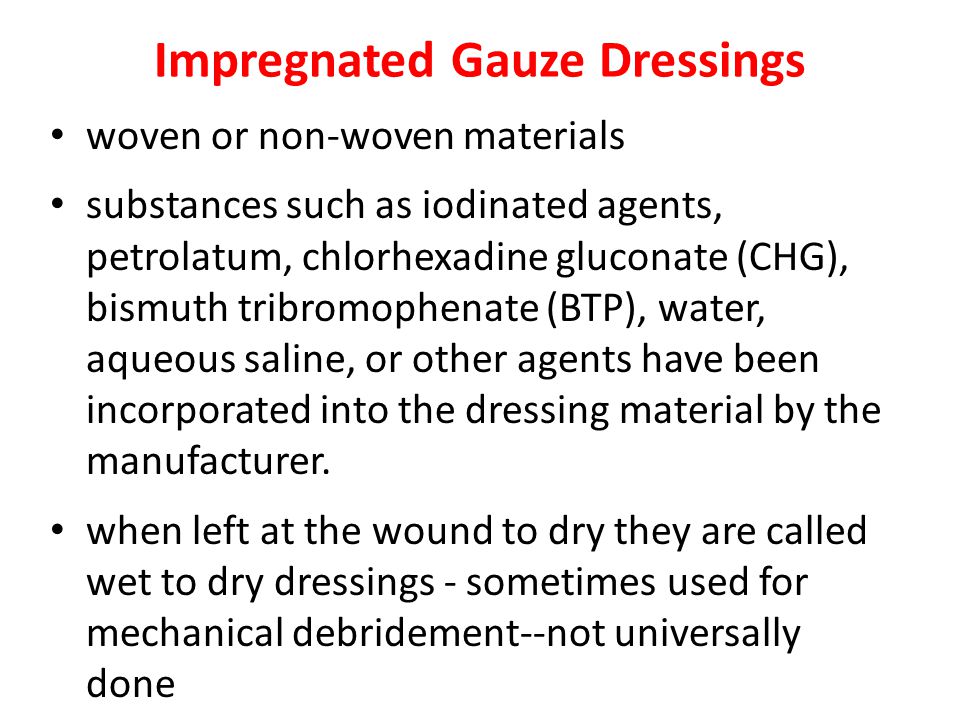
Pharmacology Wound Dressings September 11 Ppt Video Online Download

9 Types Of Wound Dressings When To Use Them Sonas Home Health
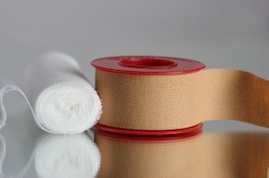
Types Of Wound Dressings Currently Used To Promote Optimal Healing

Examples Of Highly Absorbent Dressings Download Table

Sterile Water For Irrigation With Screw Top Wound Care Dressings Irrigation Medical Supplies
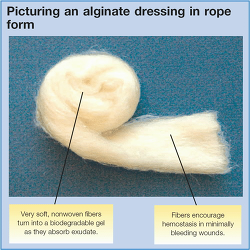
Wound Wise Introducing Alginate Dressings Article Nursingcenter
![]()
Understanding Moist Wound Healing
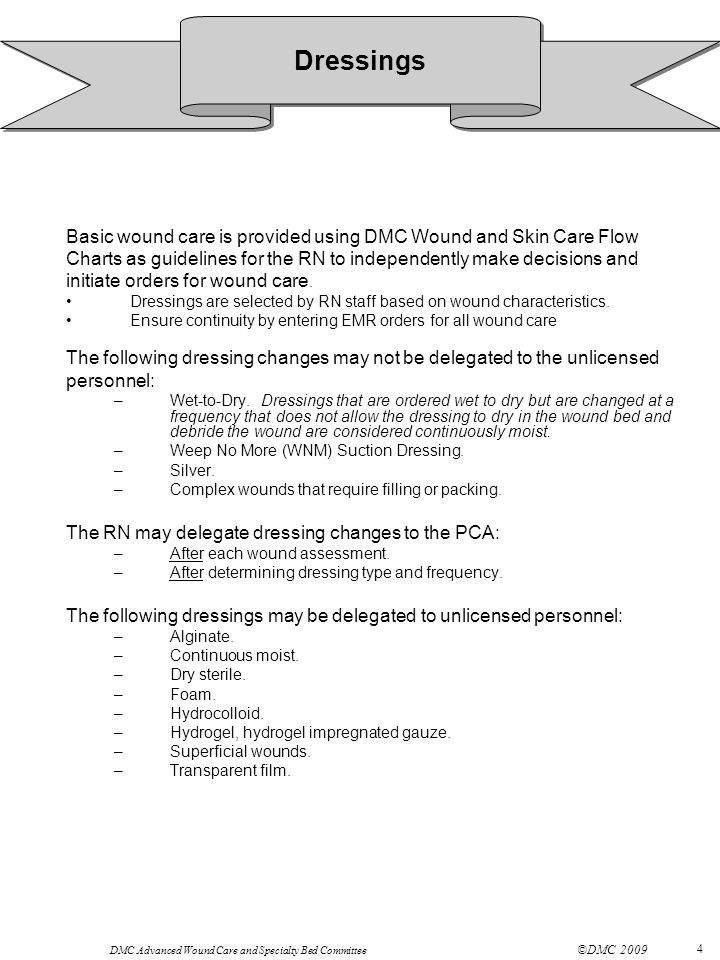
Skin And Wound Care Rn And Lpn Dressings Section 5 Of 7 Ppt Download

Advancing Wound Care Through Compliancy With F314 A Survival Guide For Ltc Ppt Download
